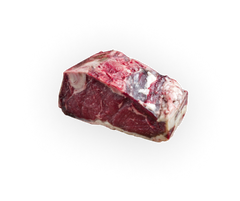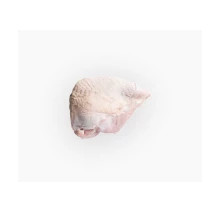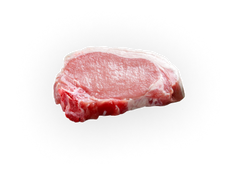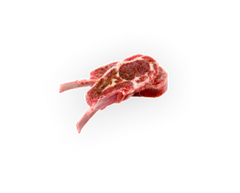Beef, a staple in many diets, takes on a whole new dimension when it comes from grass-fed cattle. Beyond being a health-conscious choice, grass-fed beef boasts a distinct taste and texture that sets it apart from conventionally raised counterparts. In this comprehensive exploration, we'll delve into the world of grass-fed beef, uncovering its unique attributes and the nuanced symphony of flavours that dance on your taste buds.
The Grass-Fed Difference: A Nutritional Powerhouse
Before we delve into the intricate flavours, it's essential to understand why grass-fed beef stands out nutritionally. Cattle that graze on pasture enjoy a diverse diet rich in grasses, legumes, and other natural vegetation. This diet imparts unique qualities to the meat, making it a nutritional powerhouse.
Grass-fed beef is notably lower in total fat than conventionally raised beef. Moreover, it contains higher levels of omega-3 fatty acids, which are essential for heart health. The ratio of omega-3 to omega-6 fatty acids in grass-fed beef is more favorable, aligning more closely with the ideal balance recommended by nutritionists.
Additionally, grass-fed beef tends to be richer in certain vitamins and minerals. It provides more antioxidants, such as vitamin E and beta-carotene, as well as essential nutrients like zinc and iron.
The Taste of Terroir: Understanding Grass-Fed Flavour Profiles
Imagine beef as a fine wine, influenced by the soil, climate, and environment where the cattle graze. This concept, known as terroir, is a crucial factor in understanding the nuanced taste of grass-fed beef.
Flavour Profile: Distinctive and Robust
Grass-fed beef is celebrated for its robust and distinct flavour. The varied diet of grass, herbs, and other natural forage infuses the meat with complex, earthy undertones. The taste is often described as more pronounced, with a depth that reflects the animal's natural grazing experience.
Texture: Lean and Tender
Due to its lower fat content, grass-fed beef tends to be leaner. This leanness contributes to a slightly firmer texture, offering a delightful chew that enthusiasts appreciate. However, it's crucial to note that this leanness doesn't compromise tenderness. Grass-fed beef can be surprisingly tender, especially when cooked with care.
Colour: Rich and Vibrant
Grass-fed beef typically exhibits a richer, more vibrant colour compared to conventionally raised beef. The meat tends to be darker, showcasing deep reds indicative of its nutrient density.
Cooking Techniques: Enhancing Grass-Fed Beef's Natural Goodness
To fully appreciate the flavors of grass-fed beef, consider the following cooking techniques that complement its unique characteristics:
Grilling: A Symphony of Char and Savoury Notes
Grilling is an ideal method for grass-fed beef, allowing the natural flavors to shine while creating a delightful contrast of charred and savory notes. Quick-cooking cuts like steaks or burgers benefit from the high heat of the grill, providing a perfect sear on the outside while preserving the juiciness within.
Slow Cooking: A Melody of Tenderness
For cuts that benefit from longer cooking times, such as roasts or stews, slow cooking is a wonderful option. This technique allows the leaner grass-fed beef to become fork-tender, absorbing the flavors of herbs and spices while maintaining its rich, distinctive taste.
Marinating: Infusing Flavour Complexity
Marinating grass-fed beef is an excellent way to enhance its flavor and tenderness. Choose marinades that complement the natural taste, using ingredients like olive oil, herbs, garlic, and citrus. This process not only imparts additional layers of flavor but also helps tenderize the meat.
Sustainable and Ethical: The Grass-Fed Advantage Beyond the Plate
Beyond the culinary experience, choosing grass-fed beef aligns with sustainable and ethical practices. Grass-fed cattle are typically raised in pasture-based systems, reducing the environmental impact associated with feedlot operations. The rotational grazing methods often employed contribute to soil health and biodiversity.
Moreover, the ethical treatment of animals is a cornerstone of grass-fed farming. Cattle are allowed to graze freely in their natural environment, promoting animal welfare and a more humane approach to farming.
Navigating the Marketplace: How to Find Grass Fed Beef Near Me
As the popularity of grass-fed beef continues to grow, navigating the marketplace can be a rewarding yet nuanced task. Here are some tips to ensure you're getting the best quality:
Understand Labels
Familiarize yourself with terms like "grass-fed," "grass-finished," and "pasture-raised." While "grass-fed" indicates a primarily grass-based diet, "grass-finished" specifies that the animal has consumed only grass throughout its life.
Local Sourcing:
Whenever possible, source your grass-fed beef locally. This not only supports nearby farmers but also allows you to inquire about their practices and inspect the conditions in which the cattle are raised.
Culinary Exploration: Elevating Your Grass-Fed Experience
Embark on a culinary adventure with grass-fed beef, appreciating the nuanced symphony of flavors it brings to your table. Whether you opt for a sizzling grilled steak, a slow-cooked roast, or a delicious burger, let the rich taste and nutritional benefits of grass-fed beef be the star of your gastronomic journey. Not only will you indulge your senses, but you'll also contribute to a sustainable and ethical food system—one bite at a time. So, enjoy the difference, explore the terroir of grass-fed beef, and enjoy the delicious rewards it brings to your plate.










